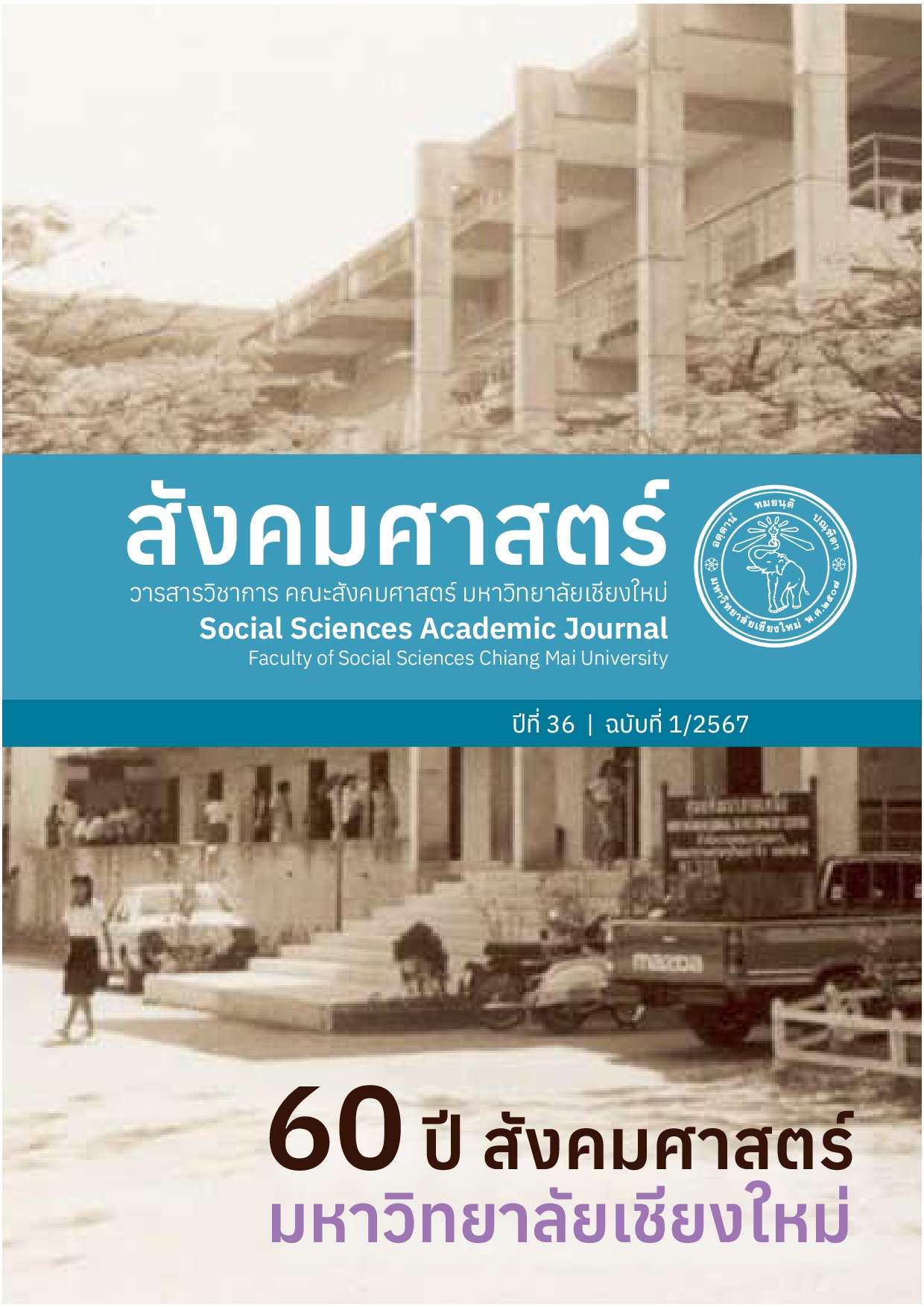The Construction of Cultural Scenes of Madi Village, Ruijin, China
Main Article Content
Abstract
The Construction of Cultural Scenes of Madi Village, Ruijin, China
Abstract
This research article aims to study the construction of cultural scenes in Madi Village, Ruijin, China. The data used to compose the article were obtained from qualitative research in the first phase, which was a document search using the theory of Cultural Scenes to explain the studied phenomenon. The results of the research indicate that five elements in constructing the cultural scenes of Madi Village are complete: Madi Village community; physical structures; diverse group of people; cultural activities and cultural values. Madi Village has constructed five cultural scenes based on the above five elements: daily life cultural scene; folk traditional cultural scene; eco cultural scene; public cultural scene and the rural production cultural scene. The cultural scenes constructed in Madi Village reflects the unique charm of Madi Village. Strengthen the villagers' sense of belonging and identity. Bringing groups of people together also brings consumption power creativity, technology, etc. come in to help Madi Village escape poverty and achieve economic, cultural, political ideology, etc. development, until Madi Village finally achieves rural revitalization.
Article Details

This work is licensed under a Creative Commons Attribution-NonCommercial-NoDerivatives 4.0 International License.
All written articles published on Journal of Social Sciences is its author’s opinion which is not belonged to Faculty of Social Sciences, Chiang Mai University or is not in a responsibility of the journal’s editorial committee’s members.
References
เอกสารอ้างอิง
Chen, J. H. 2022. “文化场景理论视域下社区图书馆场景化建构研究.” Library (3): 90-97.
Chen, S.Y. 2021. “基于场景理论的文化动力型乡村振兴模式探析.” Journal of Dali University 6 (7): 93-99.
Daniel Aaron Silver, Terry Nichols Clark. 2016. Scenescapes: How qualities of place shape social life. United States of America: The University of Chicago Press.
Daniel Aaron Silver, Terry Nichols Clark. 2015. “The Power of Scenes.” Cultural Studies (29) 3: 425-449.
Diana L. Miller, Daniel Silver. 2015. “Cultural scenes and contextual effects on political attitudes.” European Journal of Cultural and Political Sociology 2(3-4): 241-266.
Fan, W. 2020. “城市文化场景的构建机制研究——以加拿大多伦多市为例.” Administrative Reform (5): 83-91.
Lan, B. Y., Lian, H. Y. 2023. “文化场景理论视角下成都市博物馆旅游场景设计研究.” Culture and Tourism (17): 22-24.
Qi, S.Y. 2017. “建设文化场景培育城市发展内生动力——以生活文化设施为视角.” Dong Yue Tribune 38 (1): 25-34.
Ruijin gov. 2023. “麻地村村情简介.” Ruijin People's Government. Accessed November 20, 2023. http://www.ruijin.gov.cn/rjsrmzfyyh/c120617/202211/bab14f5a81d549d39b351039b2910747.shtml
Terry Nichols Clark. (Ed.). 2004. The City as an Entertainment Machine, Amsterdam: Elsevier Health Sciences.
Terry Nichols Clark, Li, L. 2017. “场景理论的概念与分析:多国研究对中国的启示.” Dong Yue Tribune 38 (1): 16-24.
Wang, H.L., Dou Y.D., Li B.H., and Liu P. L. 2023. “场景理论视角下的传统村落文化空间建构研究——以江永县兰溪村为例.” Resource Development & Market 39 (10): 1373-1382.
Wang, Y. 2022. “基于场景理论的数字文化旅游融合发展研究.” Journal of Beijing University of Aeronautics and Astronautics (Social Science Edition) 35 (4): 83-89.
Wu, J., Xia, J. Z., and Terry Nichols Clark. 2014. “场景理论与城市公共政策——芝加哥学派城市研究最新动态.” Social Science Front (1):8-14.
Zhong, M. 2018. “万田麻地,米果飘香.” Ruijin Wen Xue 23 (3): 29-34.


